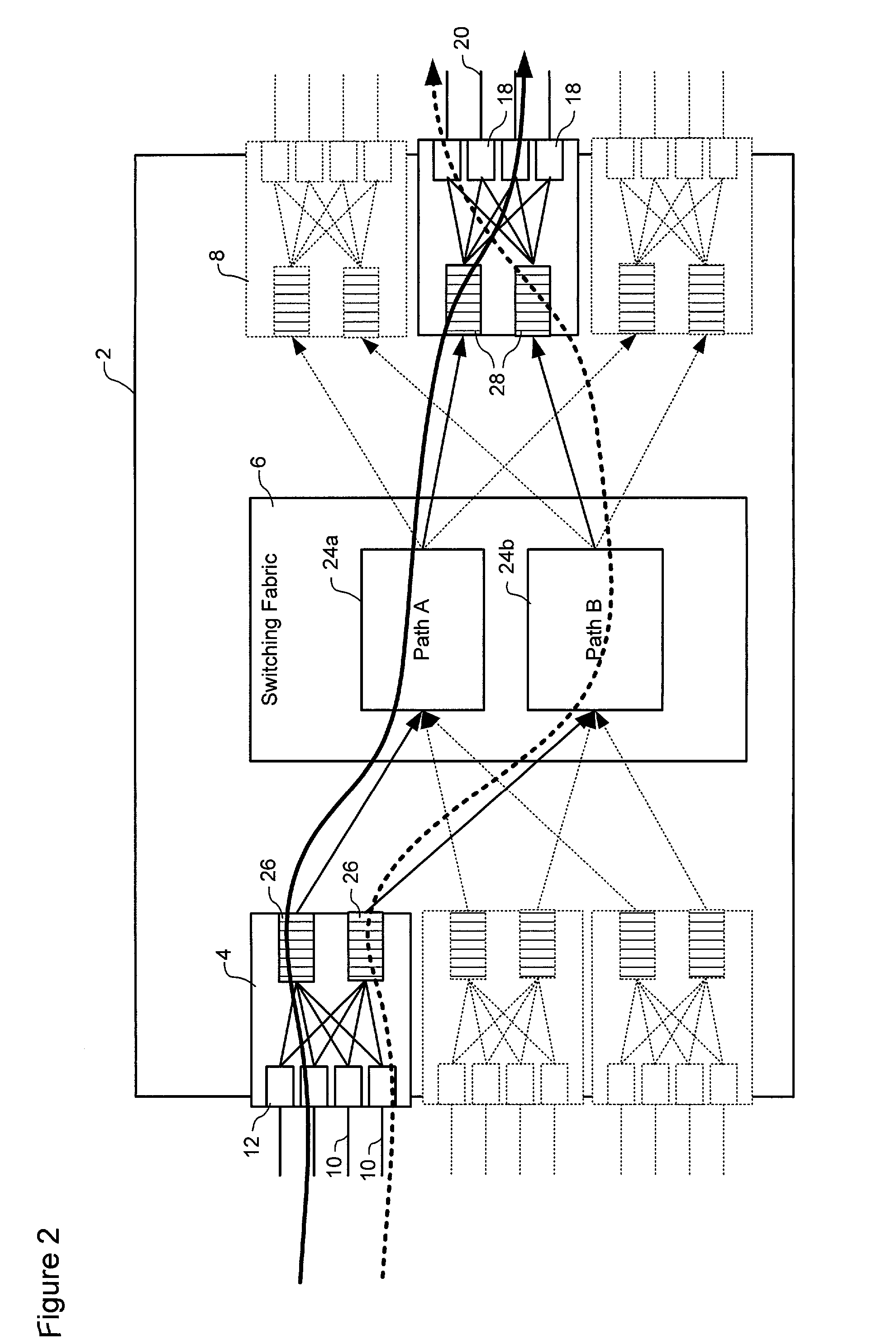Traffic switching using multi-dimensional packet classification
a traffic switching and multi-dimensional technology, applied in data switching networks, frequency-division multiplexes, instruments, etc., can solve the problems of imposing its own delays on high-priority traffic, reducing efficiency, and inefficient utilization of network resources, so as to achieve efficient traffic flow transport
- Summary
- Abstract
- Description
- Claims
- Application Information
AI Technical Summary
Benefits of technology
Problems solved by technology
Method used
Image
Examples
Embodiment Construction
[0022]The present invention provides a system that enables traffic streams with differing latency requirements to be efficiently transported across a common network infrastructure. For convenience of description, the present invention is described herein by way of examples of traffic streams being transported through a network node. However, those of ordinary skill in the art will appreciate that the present invention is by no means limited to a single node. Rather, the present invention can be applied to any network infrastructure across which it is desired to transport traffic flows having varying latency requirements. In some cases (i.e., the exemplary embodiments described herein), this network infrastructure will be limited to a switch fabric of a single node, across which the traffic flows are transported between input and output interfaces. However, the present invention may equally be deployed across multiple nodes and / or links of the network, and facilitate traffic streams ...
PUM
 Login to View More
Login to View More Abstract
Description
Claims
Application Information
 Login to View More
Login to View More - R&D
- Intellectual Property
- Life Sciences
- Materials
- Tech Scout
- Unparalleled Data Quality
- Higher Quality Content
- 60% Fewer Hallucinations
Browse by: Latest US Patents, China's latest patents, Technical Efficacy Thesaurus, Application Domain, Technology Topic, Popular Technical Reports.
© 2025 PatSnap. All rights reserved.Legal|Privacy policy|Modern Slavery Act Transparency Statement|Sitemap|About US| Contact US: help@patsnap.com



